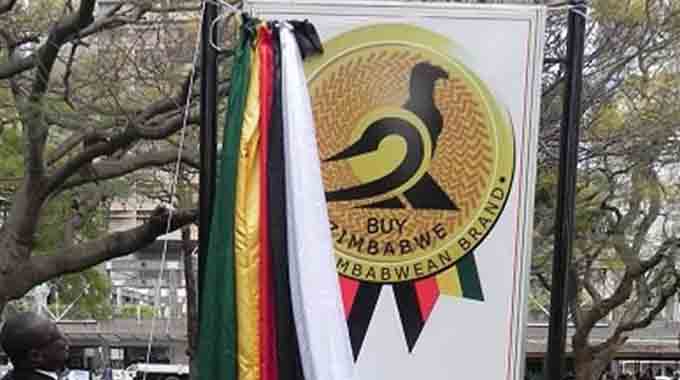ZiG needs a year to prove its acceptability
The major test of the new ZiG currency is its acceptability and its increasing use as the currency for domestic transactions, becoming the normal currency and displacing the temporary use of US dollars for everything except foreign transactions.
While the multicurrency regime is legally in place until the end of next year, and for many transactions in place until 2030, that still allows a lot of room for building up the ZiG and enforcing its use in far shorter timeframes.
President Mnangagwa did express the wish to move away for practical purposes from the multi-currency system far sooner, and bring Zimbabwe to the position where ZiGs are used for everyday purposes.
There are many good reasons why we should move into a single currency, and that being our own currency. A multi-currency regime is inherently unstable, and allows producers, retailers and their customers to manipulate exchange rates and be continually aware of exchange rates.
That helped, although was not a prime reason, for the continual collapse of the old Zimbabwe dollar and the decision by most in business to be pricing in US dollars and only converting for legal purposes to local currency on the actual day of sale, and even then being allowed, as they still are, to apply a 10 percent premium over the official interbank mid-rate.
The International Monetary Fund, hardly a body noted for non-conservative monetary policies, has made it clear that the retailer premium was not kosher and should be abolished with the real exchange rate set by pure market forces within an independent market run by commercial banks being the ruling exchange rate.
The IMF dislikes distortions, which include the distortions of fiat exchange rates set by Governments and central banks as well as distortions set by those in business.
The President in his off-the-cuff remarks was concerned with political dimensions of using a single foreign currency for local transactions, since that is limiting and could create some chaos if the issuer of the foreign currency in question wanted to be very difficult.
The US dollars in circulation in Zimbabwe are technically outside the control of the US Government, these dollars being offshore dollars, but we have seen the complications that can arise in some transactions when American banks are forced to follow rules and regulations that make it harder for Zimbabweans and Zimbabwean banks to transact in US dollars.
A more fundamental issue is that use of the US dollar ties Zimbabwe to American monetary policy, and we are talking about the currency of the largest debtor nation in the world, the one with the largest national debt and the largest foreign debt. While the American economy is so big that the debt in percentage terms can still be managed, and the United States has the huge advantage of owning the printing presses for the most widely used global currency, there is still that tie with another country.
The second problem was seen during dollarisation. Zimbabwe was in effect priced out of regional markets. Local industrialists could not produce at the prices charged by others, in particular South African manufacturers.
While import licences and customs duties could give some protection that is fairly obviously not a permanent solution.
This is particularly so in the modern world where we are seeking free trade across Africa under the African Continental Free Trade Area, which involves the abolition of customs duties and other trade barriers, which must include import licences.
We also need to note that free trade eventually involves a single market, although that is not a condition in the early years, and while customs duties and non-tariff barriers are abolished, excise duties can remain in place, along with differing VAT or sales tax rates.
Large single markets like the EU have varying national VAT rates and different excise duties on tobacco and alcohol, and even the single US market sees states with different sales taxes and different tobacco and alcohol taxes. But trade is still unrestricted.
When Zimbabwe dollarised, there was some debate on the sidelines, by economists rather than the authorities or businesses, that we should have tried the rand option although that would have involved having the South African Reserve Bank setting our monetary policy, or at least approving it, since there would have limits over money supply and other factors.
But it would also have kept Zimbabwean prices in the same orbit as South Africa.
In a little over three months the ZiG has been remarkably stable, although again the stability is judged on the exchange rate with the US dollar, not the South African rand or other currencies that might make more sense in economic terms rather than just value terms.
One reason for the stability is the gold backing. That is not just theoretical. Every Zimbabwean has the right to buy gold tokens with ZiG, and so the fact that there is least 2-1 cover by gold reserves is important.
Every single ZiG in circulation could be used today to buy gold tokens and that would do no more than lock up half the gold reserves. Such a move would have many detrimental effects but because it is possible there is a real link between ZiGs and gold.
The stability in exchange rates, or at least near stability with the ZiG exchange rte possible tracking the rand rather than pure conversion with US dollars, probably needs to last for a year before acceptance really builds up.
Several times the old Zimbabwe dollar saw its value stabilised, admittedly through moves by the authorities managing markets rather than the banks transacting as is the case at the moment. And each time, after six to nine months there was another crash.
That is in everybody’s memory and is why by the time the ZiG was launched around 80 percent of local transactions were in US dollars. At present foreign currency sales and purchases are through the commercial banking system, not auctions or even the indirect auctions of the last half of last year.
And the Reserve Bank of Zimbabwe and the Ministry of Finance, Economic Development and Investment Promotion believe they have finally tracked down all the money supply taps and switched them off.
But still, the proof of the new system will be in the results and people need to develop trust in the system.
The ZiG can fluctuate in value, and for good economic reasons might well very slowly lose value against the US dollar, but the wild swings cannot be tolerated. And three months is not really enough time.
The Government and Reserve Bank are pushing the acceptability and trying to get more use of ZiG. This is acceptable as it is transparent and out in the open. The Government decision to have half of corporate taxes by companies that deal almost entirely in foreign currency paid in ZiG is a case in point.
The Reserve Bank dealing with retailers, bus companies and even kombi owners to get more ZiG use, at least as change, is another.
But the authorities can do more. As soon as possible all Government services must be exclusively ZiG fees; that would send a major message.
The petroleum sector at least for private and private sector sales is exclusively US dollar, for the good reason that this major import item is not funded out of export earnings but effectively by diaspora remittances, even when a Western Union dollar goes through a score of hands before the forecourt.
That switch, allowing the fuel industry to use free funds, copes with the negative balance of trade in a climate where foreign currency inflows significantly exceed outflows, the non-trade dollars largely coming from the diaspora.
But the possibility exists for Petrotrade, or some other company, to start selling some fuel in ZiGs again.
The curiosity is that if all local transactions were in ZiG, then receivers of diaspora remittances would have to convert before shopping, and that would mean there was a surplus of foreign currency in the market.
The problem is moving from where we are to where we want to be, and that involves building up ZiG use in steps and getting ever more exporters and ever more other receivers of foreign currency to switch to ZiG.-ebusinessweekly












